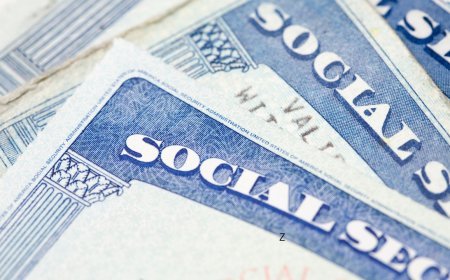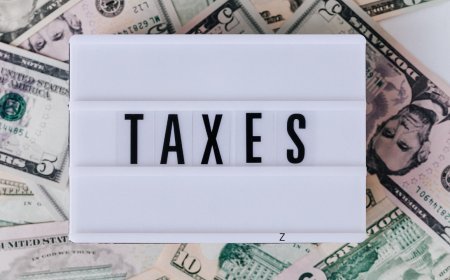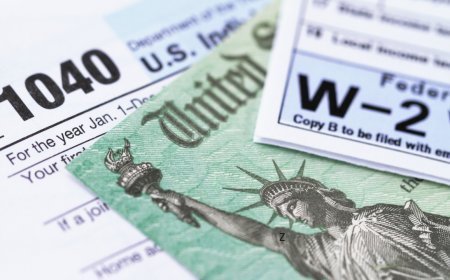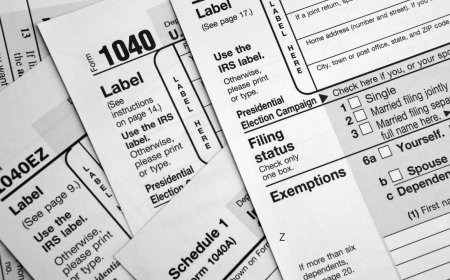Optimizing Retirement Accounts for 2025: A Path to Financial Security
Retirement accounts are among the most powerful tools for individual taxpayers, offering unparalleled tax advantages to reduce current tax liabilities while building long-term wealth. With contribution limits increasing in 2025, these accounts provide even greater opportunities to save strategically for the future. This comprehensive guide explores the key retirement accounts, their tax benefits, updated contribution limits, and actionable strategies to maximize savings, empowering you to secure your financial future with confidence.

In This Article
-
The benefits and limits of 401(k) plans, including Traditional and Roth options
-
Traditional and Roth IRAs, including income limits and the Backdoor Roth strategy
-
SEP-IRAs and Solo 401(k) plans for self-employed individuals
-
SIMPLE IRAs and HSAs as additional retirement savings vehicles
-
Strategic considerations for contributions, tax diversification, and estate planning
401(k) Plans: Traditional and Roth Options
Traditional 401(k) plans, a staple of workplace retirement savings, allow pre-tax contributions that lower taxable income, with investments growing tax-deferred until withdrawal. For 2025, the contribution limit is $23,000, with a $7,500 catch-up for those 50 and older, totaling $30,500. Many employers offer matching contributions—often 50% of the first 6% contributed or 100% of the first 3%—which do not count toward your limit, making it critical to contribute enough to secure this "free money" for maximum benefit.
Roth 401(k) plans, funded with after-tax dollars, offer tax-free growth and withdrawals in retirement, ideal for younger workers or those expecting higher tax rates later. Sharing the same contribution limits as Traditional 401(k)s, Roth plans suit those anticipating rising income or tax brackets. Choosing between Traditional and Roth depends on your current and projected tax situation, but combining both can provide tax diversification, balancing immediate tax savings with future tax-free income.
Traditional and Roth IRAs: Flexibility and Tax Strategies
Traditional IRAs offer tax-deductible contributions up to $7,000 in 2025, with a $1,000 catch-up for those 50 and older, totaling $8,000. Deductibility phases out for single filers with incomes between $77,000 and $87,000, or $123,000 to $143,000 for married couples filing jointly, if covered by a workplace plan. Investments grow tax-deferred, but withdrawals are taxed as ordinary income, making Traditional IRAs appealing for those expecting lower tax rates in retirement.
Roth IRAs, with identical contribution limits, use after-tax dollars for tax-free growth and withdrawals, with phase-out ranges of $138,000–$153,000 for single filers and $218,000–$228,000 for married couples. High earners can use the Backdoor Roth strategy, contributing to a non-deductible Traditional IRA and converting it to a Roth, paying taxes only on earnings. Roth IRAs also allow penalty-free withdrawal of contributions at any time and have no required minimum distributions (RMDs), offering unmatched flexibility for retirement and estate planning.
SEP-IRAs and Solo 401(k) Plans: Powerhouses for the Self-Employed
SEP-IRAs are ideal for self-employed individuals and small business owners, allowing contributions of up to 25% of net self-employment income or $66,000 in 2025, whichever is less. Contributions are tax-deductible, and investments grow tax-deferred, but employers must contribute equally for all eligible employees, which can increase costs for businesses with staff. This high limit makes SEP-IRAs a powerful tool for self-employed individuals seeking to maximize retirement savings.
Solo 401(k) plans, designed for self-employed individuals with no employees (except a spouse), allow dual contributions: $23,000 as an employee (plus $7,500 catch-up for those 50+), and up to 25% of net income as an employer, up to a total of $66,000 or $73,500 with catch-up. These plans offer pre-tax contributions and tax-deferred growth, providing flexibility to balance immediate tax savings with long-term wealth accumulation, making them a versatile option for entrepreneurs.
SIMPLE IRAs and HSAs: Alternative Savings Vehicles
SIMPLE IRAs, designed for small businesses with 100 or fewer employees, allow employee contributions of $16,000 in 2025, with a $3,500 catch-up for those 50+. Employers must either match up to 3% of compensation or contribute 2% for all eligible employees, with employee contributions being pre-tax and growing tax-deferred. These plans offer a straightforward way for small businesses to provide retirement benefits without the complexity of larger plans.
Health Savings Accounts (HSAs), while not traditional retirement accounts, serve as a powerful supplement with triple tax advantages: tax-deductible contributions, tax-free growth, and tax-free withdrawals for qualified medical expenses. For 2025, contribution limits are $4,150 for individual coverage, $8,300 for family coverage, and $1,000 catch-up for those 55+. After age 65, non-medical withdrawals are taxed as ordinary income without penalties, making HSAs a flexible tool for both healthcare and retirement planning.
Strategic Considerations for Maximizing Savings
To optimize retirement savings, timing and account selection are critical. Contributing early in the year maximizes tax-deferred or tax-free growth, while deferring contributions to January may yield larger deductions if you expect a lower tax bracket. Tax diversification—splitting contributions between Traditional and Roth accounts—hedges against future tax rate uncertainty, ensuring flexibility in retirement withdrawals. Additionally, prioritizing employer matches in 401(k) or SIMPLE IRA plans is essential, as these contributions significantly boost savings without affecting your personal limits.
Estate planning and RMDs also play a key role. RMDs, required for most accounts (except Roth IRAs) starting at age 73, are calculated based on account balance and life expectancy, with a 25% penalty for non-compliance. Naming beneficiaries and understanding the SECURE Act’s 10-year withdrawal rule for non-spouse beneficiaries can streamline wealth transfer. Automating contributions and focusing on accounts with the best tax benefits for your income and goals will ensure you maximize your retirement savings potential.
What's Your Reaction?
 Like
0
Like
0
 Dislike
0
Dislike
0
 Love
0
Love
0
 Funny
0
Funny
0
 Angry
0
Angry
0
 Sad
0
Sad
0
 Wow
0
Wow
0




































